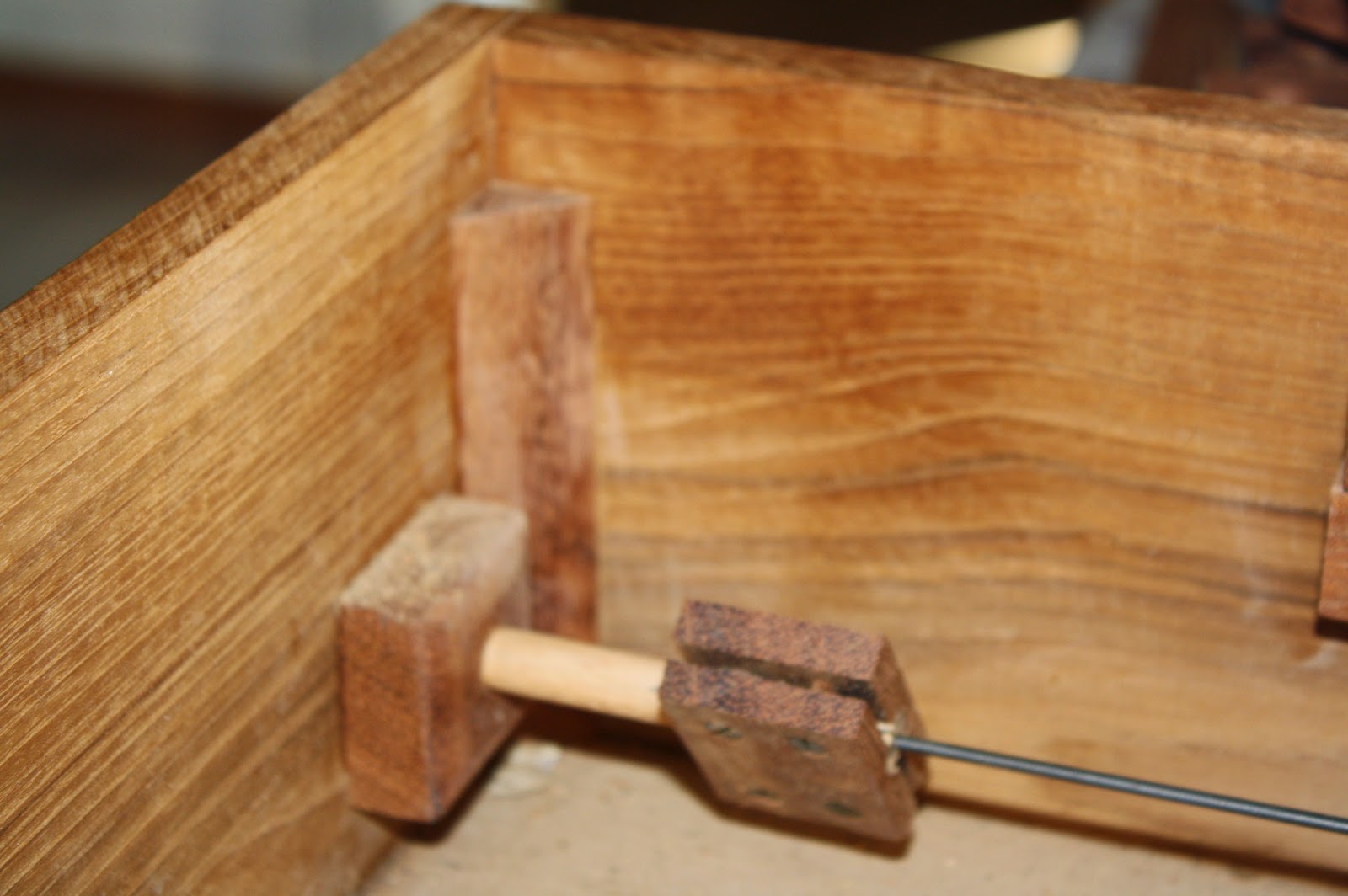Day 3 we pretty much all worked on our legs. Off course there were a lot of other things such as planing, sanding and discussing which way the things should look.
My parents paid us a visit and my father brought along some old tools, so we took some time deciding which ones we couldn't live without. We both ended up with some chisels and various other stuff.
My mother made sure we didn't loose any weight, so we had late morning coffee with rolls followed about an hour later by a large lunch. At 3 o'clock coffee was served including apple cake and cookies and some delicious Panna Cotta that Olavs wife made.
Around 6 we had a large supper with wine etc.
Brian joked about Danes being like Hobbits employing the 2nd breakfast and more small meals spread out over the day.
I managed to put on the legs of my bench in the evening, but that was about it.
Sunday I finally collected enough courage to drill some holes for the loop back. And much to my surprise I managed to get them both pretty even.
After test mounting in the loop back, the whole contraption suddenly looked like a bench instead of looking like a shaped plank with four sticks in it.
I marked the position for the centre spindle for the loop back, and used a divider to step out the position for the remaining spindles from that point. The spindles are placed 4" apart.
The two front spindles are a little further away from the loop back than 4 inches, but it still looks OK.
I used a level to transfer the location of the spindles to the back so I would ave something to aim for when drilling the holes.
After remounting the loop back I drilled some 16 mm (5/8") holes in the seat eye balling the angle in relation to the back. the 2 front most holes in each side had to be drilled without the back to make room for the drilling machine.
I used a cordless drill and a spade bit. I tried to go very slow at the bottom of the hole, because it is difficult to drill from both sides when the hole is at an angle. I managed to get by with just a little bit if tear out.
The back went on again and I flipped the bench over. Aiming through the holes in the seat I now drilled the holes in the loop back. This was done from the underside of the loop. These holes were 12 mm.
Again a few of the holes near the front needed to be drilled with the loop back taken off.
The holes in the back were tapered using Brian's tapered reamer, and the spindles were tapered as well.
All the spindles were made by planing some square 16 mm (5/8") stock octagonal and then further rounded by an plane finishing with some sandpaper.
I inserted the spindles from the underside of the seat and hammered them all the way till they seated in the loop back. I used liquid hide glue for this operation because the hot hide glue stiffened up a bit too quick. The spindles were finally secured with a wedge in each end.
I started fitting the centre spindle and then worked in pairs on each side of it, each time leaving an open spot between the spindles. I have no idea if it is the preferred way, but it worked for me. I figured that it would prevent me from accidentally dislocate one side of the back by accident.
Once all the spindles were mounted I sawed of the protruding part of the all the wedges.
The entire settee was sanded up to grit 180.
I finished the piece by rubbing in Camelia oil wit a black scotch brite pad. Then I wiped all the chair over with a clean rag to remove any excess oil and the eventual slurry made from the scotch brite.
I got some bees wax and orange oil from Brian, so I decided to try out making my own paste wax finish.
I never measured the amount of ingredients I mixed, but I think it is 4 tablespoons of wax, 1.5 tablespoon of orange oil and half a tablespoon of camelia oil. The batch was heated up until the wax melted and then stirred and left to harden up.
The result is a very pleasant smelling wax that has a nice consistence.
Today I waxed the settee and finally buffed it off.
All there is left is to decide where to put it in the house.
Paring the end of a leg, Jensen senior in the background.
Brian's Moxon vice. Note the nice flower on the seat.
Brian drilling holes for the legs.
The legs are mounted.
Windsor settee with a loop back.
OK result for my first windsor type furniture.
Nice gentle curves.
Ash legs and spindles, elm seat and loop back
Even the weather is nice.
























